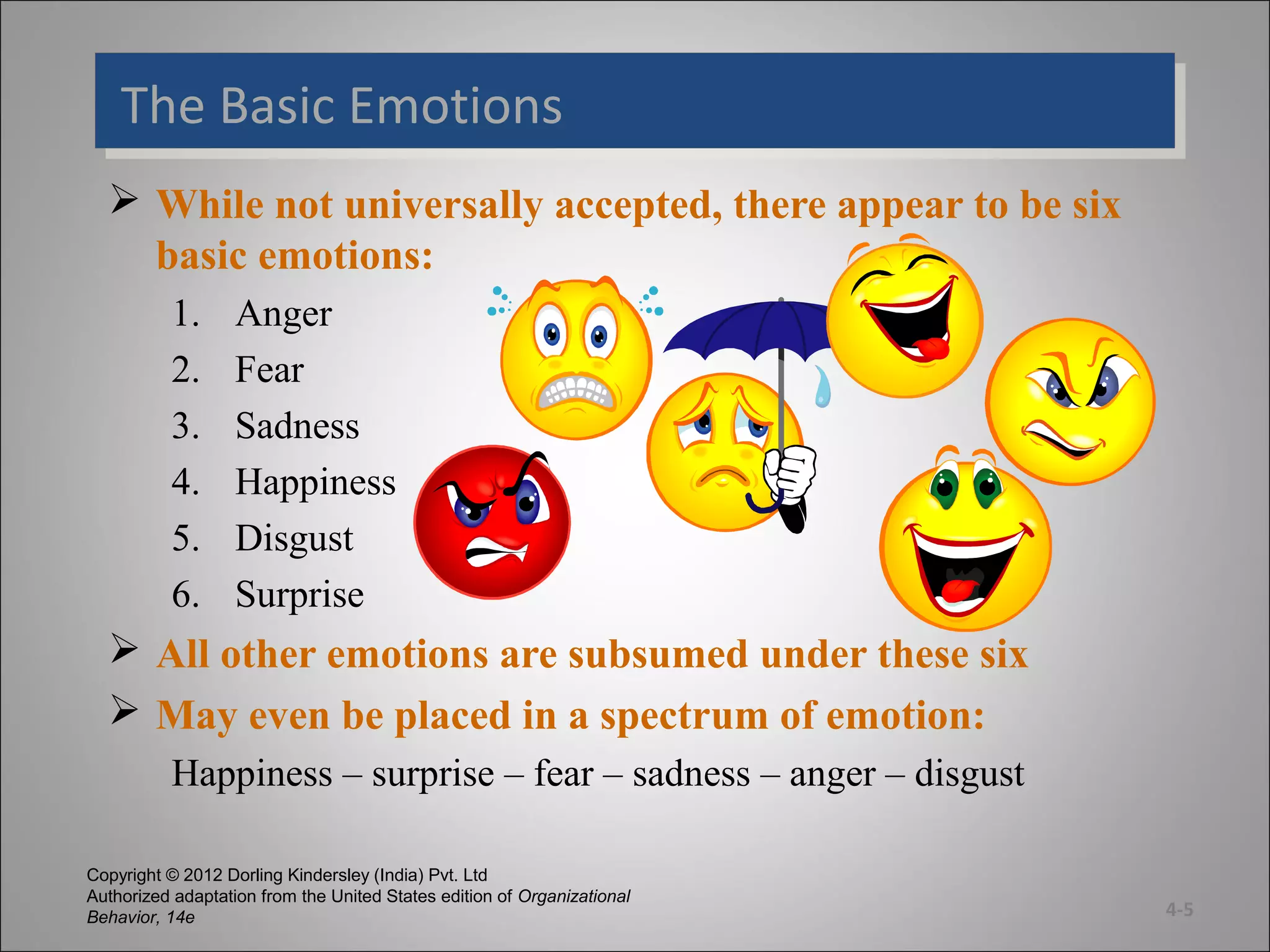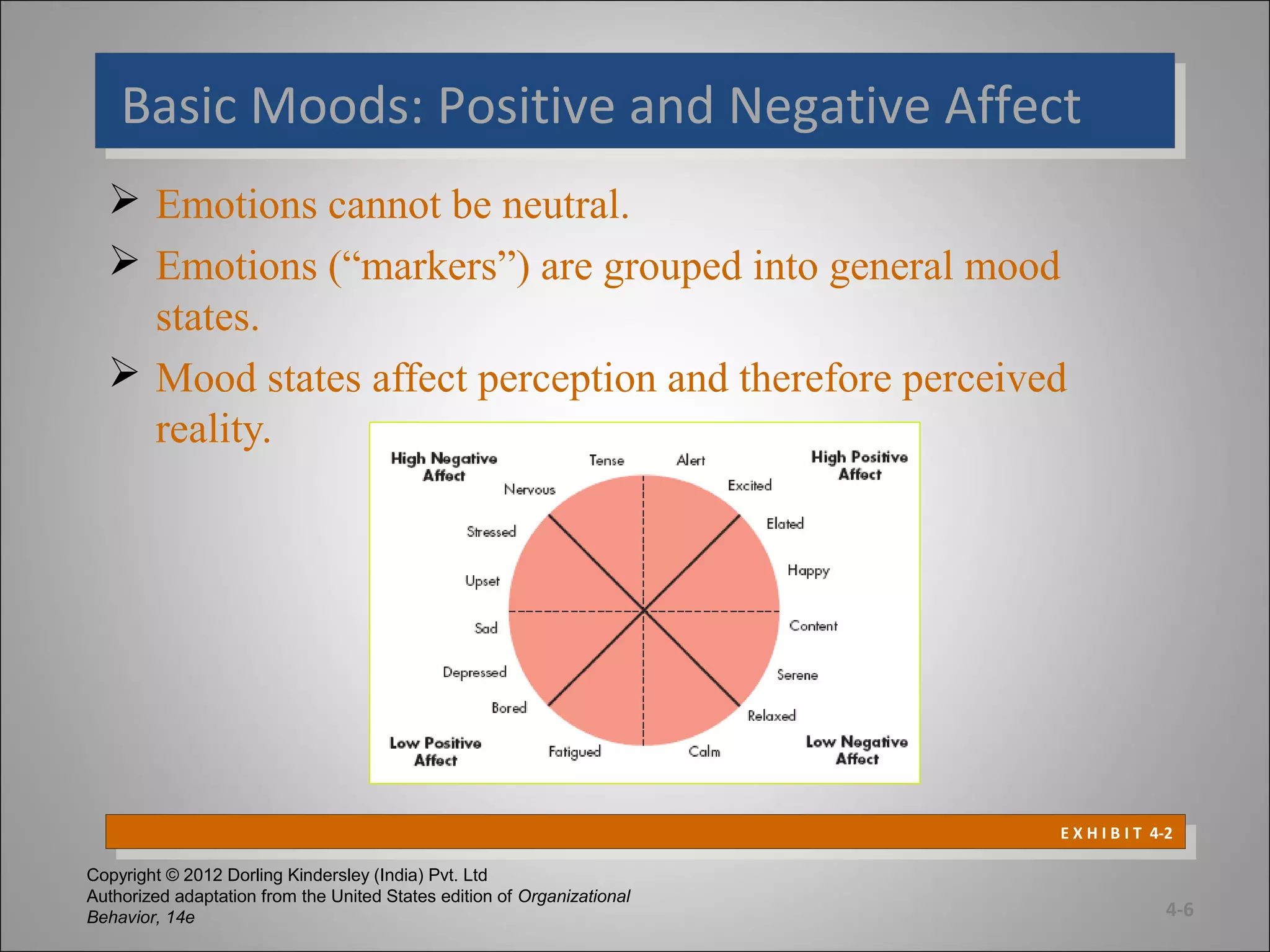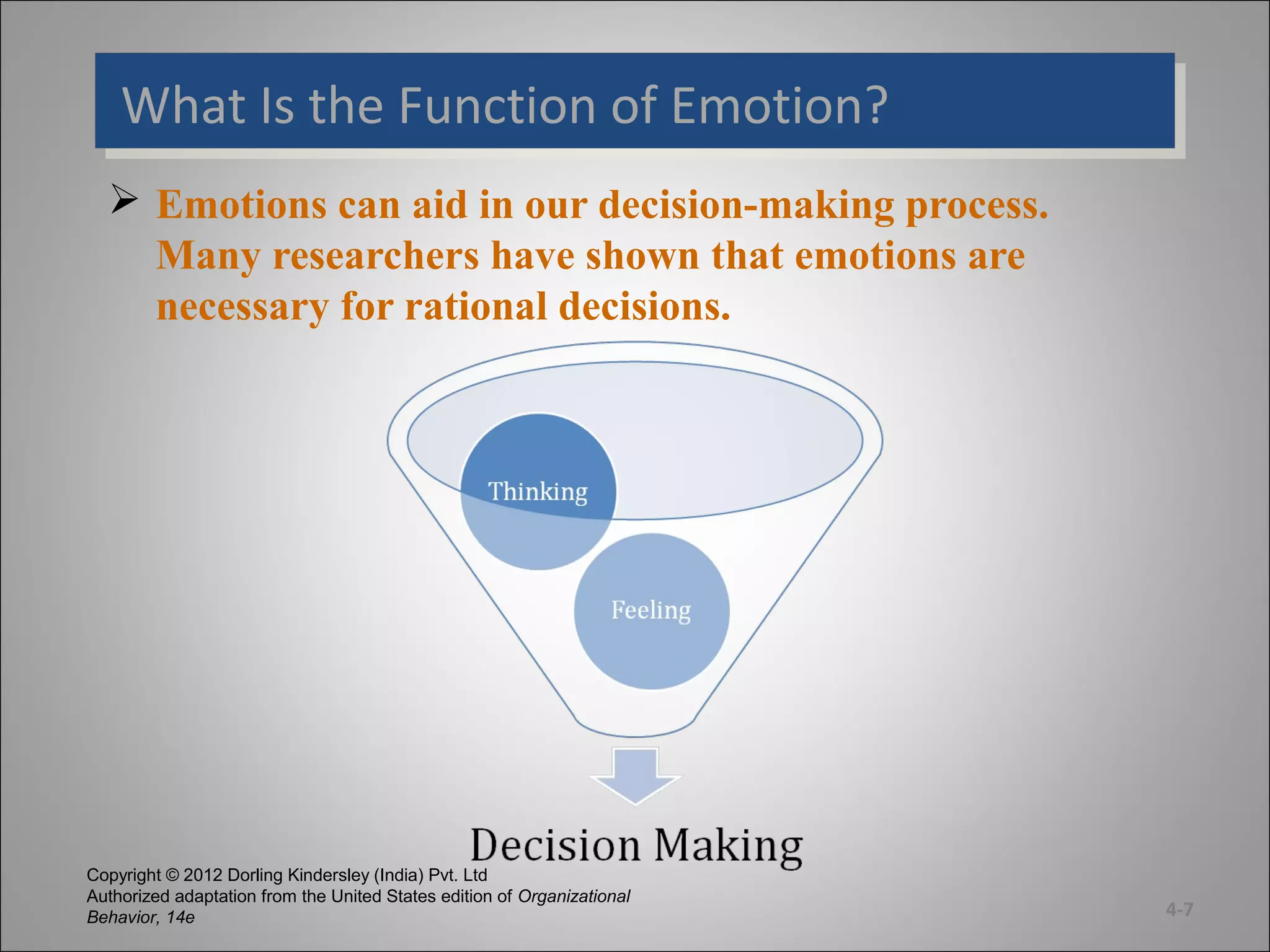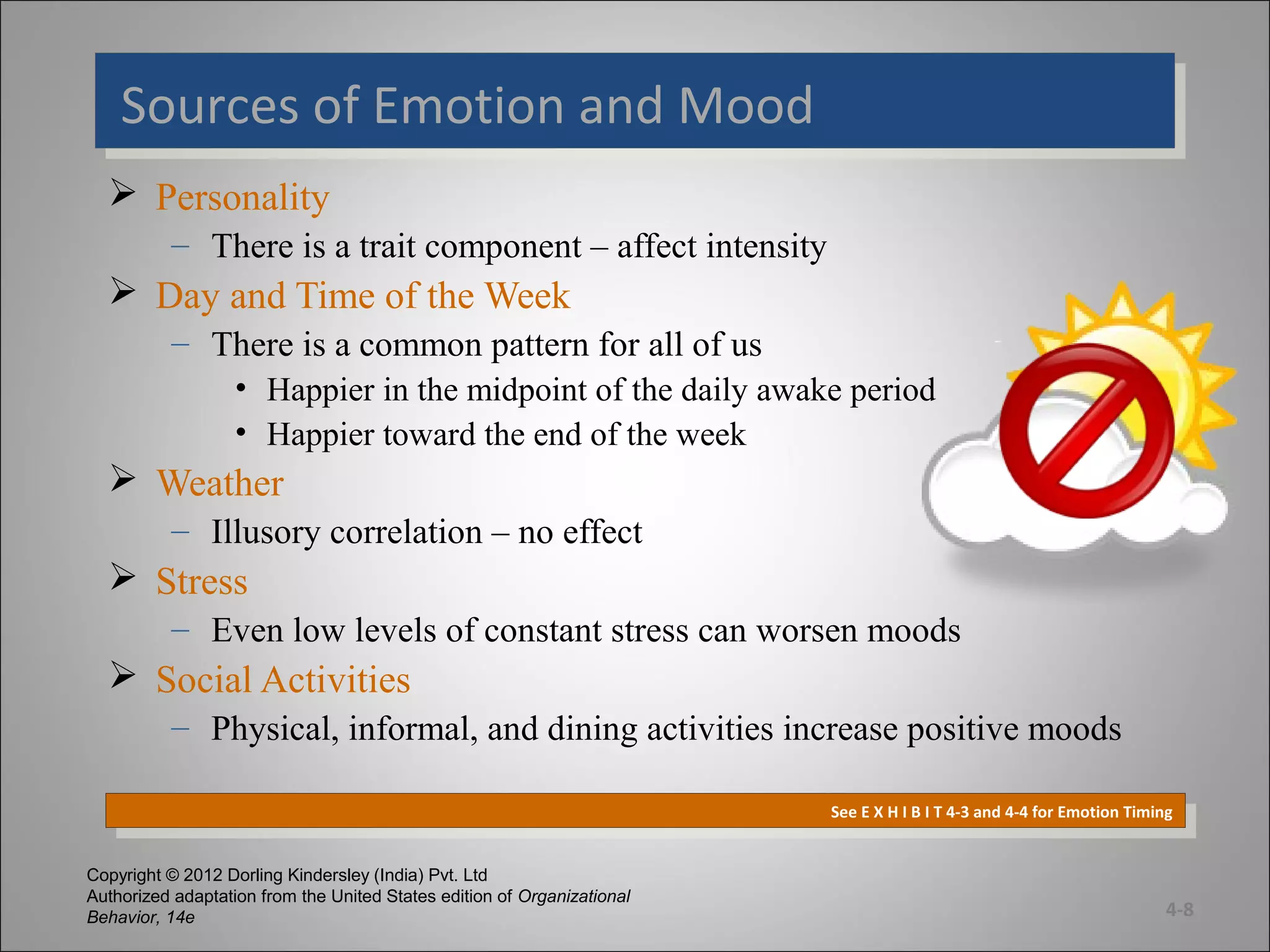This document summarizes a chapter from an organizational behavior textbook about emotions and moods in the workplace. It defines emotions and moods, discusses common emotions and moods, and explores how emotions are influenced by factors like personality, social activities, and emotional labor. The chapter also describes affective events theory and emotional intelligence, and examines applications of emotions and moods to areas like decision-making, leadership, and global implications for different cultures. Managers are advised not to ignore or over-control the emotions of employees, as emotions impact many aspects of organizational behavior.

















